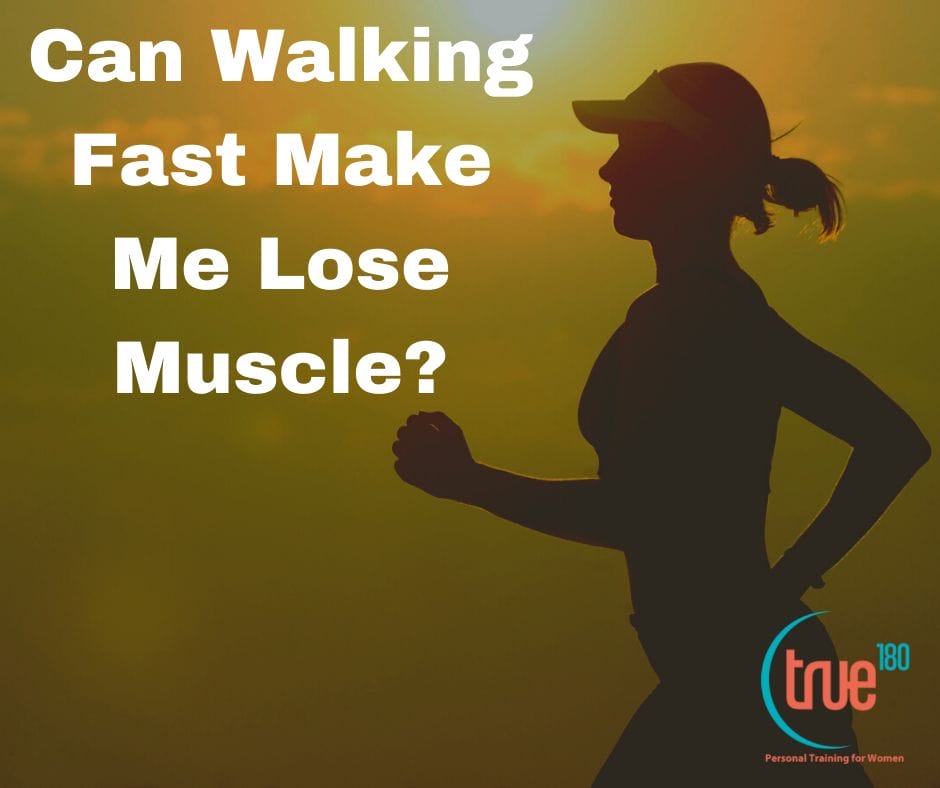Q & A: How fast should I walk to avoid losing muscle mass? I’ve been reading online that if you go over 2.5mph you will burn up your muscles.
A: Luckily our muscles are not flammable, so please walk as fast as you can possibly sustain.
(Context: this client had 30 min on a treadmill to get extra steps in, so this advice is based on those constraints – 30 min, treadmill.) Also, since you are on a treadmill, turn the incline up to 1/3 or more of how high your machine will go.
Why as fast as possible?
Because we have 30 min and want to burn as many calories as possible. Slower means less work done and fewer calories expended. Any pace that a person can sustain for 30 min will not be exhausting. I mean exhausting in the academic sense of having a massively negative impact on the next day’s workout. It will be tiring (or it should be tiring), but an effort level your body can sustain for that long won’t be a problem for the next workout.
Why the incline?
For the same reason as above – calories. Walking on a motorized and level treadmill will burn fewer calories than walking on the ground, or on a non-motorized treadmill. The reason for this is because the motor does some of the work for you by moving the belt. It is still good for you. The incline forces your body to work harder to push you “forward” and offsets the calories not burned because the belt does a bit of the work for you.
The incline also keeps people from cheating as much, and improves walking/running form as well. On a level treadmill it is easier to cheat by leaning and using your arms to support you. You can still lean on the machine with the incline, but your legs are forced to do more of their work regardless. The incline also forces people to pick up their knees and feet, and they tend to do a better job of protecting their knees with their muscles when they get tired.
Why won’t your muscles be burnt up?
It takes 60 hours without any food whatsoever for your body to turn to your muscles for fuel. So, as you can see, the speed of your walking isn’t going to counteract your strength training unless you haven’t eaten in 3 days and you do this often.
If you are doing your strength training consistently and consuming enough protein then you can walk as fast as you want, or, rather, as fast as you can, without any worry. However, if we are talking about max effort running and sprints, that’s a different story. The problem with truly exhausting exercise like sprinting is that it is, well, exhausting. Your legs/body will be very tired for days afterwards. If your legs/body are often exhausted when you workout then that could interfere with your strength progress, and, possibly, lead to some reduction is muscle mass. Additionally, if you are over 35, the risk of Achilles tendon rupture from actual* sprints is usually too high to be worth it. (*actual sprinting isn’t the same as running really fast or hard.)
Anything else I should know?
Yes. Wearing a weighted vest when you are walking helps to counteract the negative impact of weight loss. Yes, there are 2 downsides to losing weight: (1) you burn fewer calories with everything you do, because there is less of you to move, and (2) your skeleton is at risk from the reduced stress on it. Our bones grow or atrophy in response to stress, so if your bones have less load on them then they will get weaker. Strength training that puts intense downward stress on your body will counteract this. Wearing a weight vest of 10% of your body weight or the amount of weight you have lost will protect your skeleton, keep your calorie burn up, and, oddly enough, seems to suppress appetite.
Charlotte Personal Trainer answer’s your Q & A. Let us know your questions in the comments.

